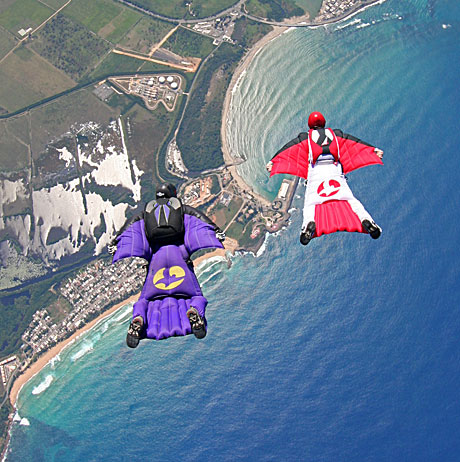 |
| Wingsuit Flying by Matt Hoover |
Wingsuit flying uses a special suit to increase the surface area of the person generating forward movement. This allows the skydiver or BASE Jumper to have a much longer flight and have a feeling of flying. The Jumper opens a parachute at the same height as a normal BASE Jumper to land.
Popular places for WiSBASE are Kjerag and Trollstigen in Norway, Lauterbrunnen in Switzerland, and Monte Brento in Italy.
Proximity Flying
Proximity Flying is an extreme form of WiSBASE where Jumpers try to get themselves as close to objects as they can. This is the most dangerous form of BASE Jumping and also the one that people find most exciting to watch. Two of the best Proximity Flyers at the moment are Jeb Corliss and Jokke Sommer.
"Grinding The Crack" by Jeb Corliss
"Playing with the Vampire 4" by Jokke Sommer
Free Base
Free BASE Jumping is a sport invented by Dean Potter who wanted to combine Free Climbing (rock climbing with no safety lines) and BASE Jumping. It is when he climbs up a rock face only wearing a parachute and if he falls off, he parachutes safely down. He also slack lines (like tightrope walking) with a parachute.
"Free BASE" by Dean Potter





